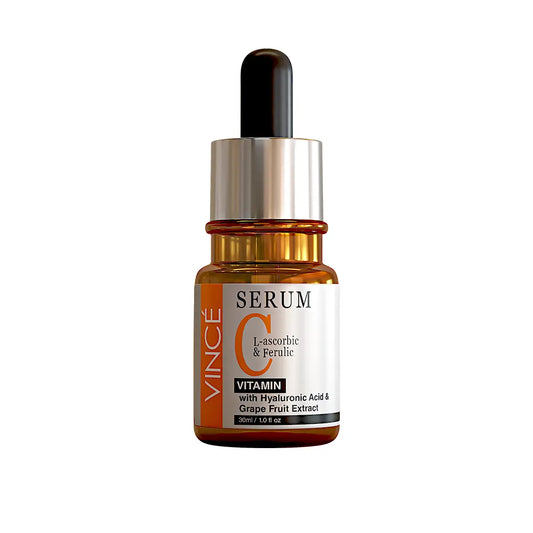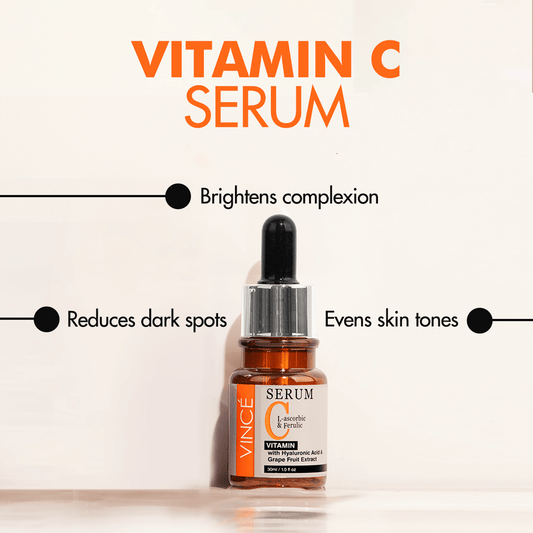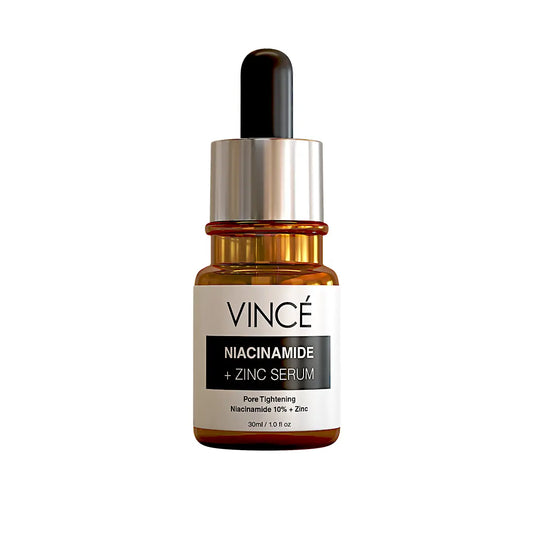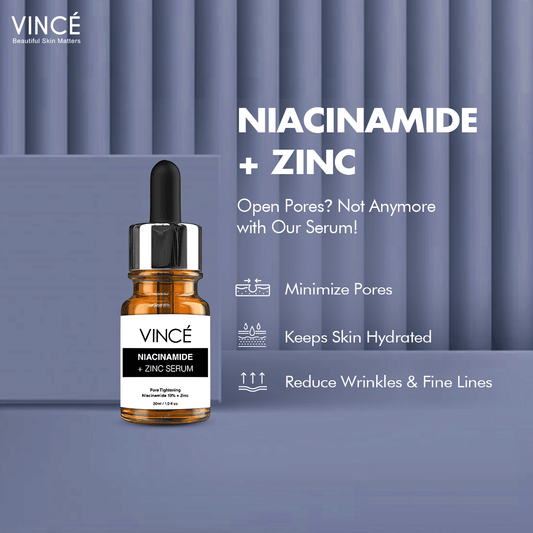How to Use Sunblock on Your Face: Essential Steps for Optimal Skin Protection

The magic of a small bottle of UV protection face cream lies in its role as a silent guardian of your skin. Once you find sunscreen for your face, you discover an invincible layer to challenge the sun’s burning grip. So, if you too are among those people concerned about the impact of UV rays on skin, shift your focus towards spotting the best sunblock for your face.
Once you master the art of determining what SPF to use on your face and the steps to use sunblock daily, the sun’s harsh rays will feel like a gentle caress on your skin.
A comprehensive guide will break you free from the vicious cycle of uncertainties over whether to apply sunscreen before makeup or after, and whether to choose face sunblock with SPF 50 or 35.
This article will walk you through how to use sunblock on your face, answering all your queries and empowering you to step into the sun without compromising skin health.
Significance of Sunblock for Your Skin Health
Before learning how to use sunblock on the face, exploring its indisputable benefits will make you stick to the habit of wearing a sunblock before stepping out. It is an unavoidable product even if you have a minimalist skincare routine. When you avoid meeting the sun without applying sunblock, the following are the primary benefits you will experience:
Important Link: Best Skincare Routine to Get Glowing Skin in Pakistan
- Reduces risk of skin cancer
- Prevents premature aging signs and delays the appearance of wrinkles and fine lines
- Inhibits pigmentation, sunspots and skin discoloration concerns to maintain smooth and even skin texture and tone
- Supports overall skin health
Choosing the Right Sunblock for Your Face
Picking the right product is as crucial as practically understanding each step in the guide on how to use sunblock on the face. There are multiple factors at play, differentiating one sunblock from the other.
Therefore, the lineup of sunblock in the market is not all the same and differs in their basic features. These features will help you significantly in singling out the best sunblock out of an overwhelming array of available options.
Broad-spectrum Protection
Sun’s rays reaching us emit two different types of radiation. One responsible for skin cancer and sunburns is UVB radiation. On the other hand, UVA rays make UVB more reactive and primarily contribute to wrinkles and skin sagging.
You may find sunscreen for the face that protects against either UVA or UVB rays. However, for ultimate protection, a broad-spectrum sunblock effectively guards your skin against both of these dangerous UV radiations.
Sun Protection Factor
Shortly abbreviated as SPF, it measures how long a sunblock can protect against harmful UV rays, and their levels decide the proportion of UVB rays they can block. For instance, SPF 35 can block 97% of UVB rays, while face sunblock with SPF 50 blocks 98%.
Face sunblock with SPF 50 is the limit, and you won’t get substantial benefits from higher numbers.

Sunscreen Types: Chemical vs. Physical
Mainly, all the sunblock you may discover falls in one of the following two categories:
- Physical sunscreen, commonly known as mineral sunscreen, works by forming a shield on your skin. Its protection mechanism involves reflecting UV radiations away from your skin.
- Chemical sunscreens contain ingredients that function like sponges to absorb UV radiations and convert them into heat.
Based on their protection mechanism, mineral sunscreen is a preferable option for the following reasons:
- It won’t let UV rays reach your skin by blocking them before they get absorbed, leaving no room for allergies.
- It is less likely to irritate sensitive or acne-prone skin.
Water-Resistant Formula
A water-resistant formulation allows you to enjoy water-based activities without worrying about sunblock melting off, and stay effective even when your face gets sweaty.
What SPF To Use On Your Face?
Wearing a sunblock is a necessity, not an option. While people often worry about finding sunscreen for their face, missing out on one is a bigger mistake. It’s best to pick a sunscreen from a reputed brand marked as broad-spectrum UV protection with a minimum SPF of 30.
Additionally, if you opt for a water-resistant formula, your skin is all set for a prolonged visit outside.

Step-by-Step Guide: How to Use Sunblock On Face
Only spotting the best sunblock for your face won’t save you from damaging effects, but in parallel, learning how to use sunblock on your face holds the key. Adhering to the steps to use sunblock daily will unleash countless benefits for your skin. Here is a detailed guide elaborating on each step and the tips to follow:
1. Prepping Your Skin Before Sunblock
It is the last step in your morning skincare routine, but never forget to apply sunscreen before makeup. Firstly, cleanse your face and use a hydrating toner like Vince’s Lightening Toner to offer your sunscreen a refreshed base for better absorption.
Now, it is serum’s turn and one that best compliments a sunblock is none other than Vitamin C serum, always ready to catch any slip-ups from sunblock. Finally, complete the pre-sunblock regime by sealing in all the goodness using a reliable, creamy moisturizer.
Important Link: What Is The Difference Between Sunscreen And Sunblock?
2. Take the Recommended Amount
You roughly need two finger lengths, equivalent to a nickel-sized dollop worth of sunblock in one go. It would be sufficient to create a thick protective layer on your face and neck. Never forget to cover all the areas of the skin that are exposed directly to the sunlight.
3. Application of Sunblock
Choose a gentle tapping motion to spread sunscreen evenly, starting from the center of your face and working your way outward. Massage the sunblock by adopting an upward movement, giving it enough time to sink in and completely absorb into the skin.
Remember to always apply sunscreen on dry skin, and let your moisturizer get absorbed completely before layering the skin with a sunblock. As damp skin is likely to dilute the formulation and reduce its effectiveness, especially mineral sunblock, by interfering with its ability to form a protective shield.
4. Waiting Time
If you are using physical sunblock, the good news is there’s no need to wait any longer. You are ready to hit the door the moment you finish the application. However, chemical sunblock needs time to settle on your skin to function appropriately by trapping the UV rays, so waiting is non-negotiable.
After applying sunblock, grab a timer and keep track of the time. Once 15-20 minutes have passed, now your skin is ready to face the sun without worrying about its aftereffects.
5. Reapply to Stay Protected
Sunblock’s effectiveness takes a dip over time, and a single application won’t last the entire day. Therefore, reapply your sunblock every 2 hours for unquestionable UV protection throughout the day. Increase the frequency of application when swimming or engaging in other water-based activities. Sweating is another factor demanding frequent reapplication for optimal skin health.
6. Complement Sunblock with Sun-Safe Practices
Sun rays’ damage has serious repercussions, so always go beyond just using sunblock. After learning how to use sunblock on your face, adopt the following effective practices to strengthen your skin protection game:
- Avoid prolonged sitting under the sun even after applying sunscreen, especially during peak hours - 10 am to 4 pm.
- Wear accessories like hats, glasses, and gloves, and try covering the skin as much as possible with full-sleeved clothes.
- Avoid walking directly under sunlight and seek shades instead.
Important Link: Best Sunblock for Oily Skin in Pakistan 2025
Conclusion
Despite its many benefits, the sun also has its share of damaging rays, a major cause of pigmentation, skin cancer, and sunburns. Maintaining healthy and radiant skin will remain a distant goal if you don’t learn how to use sunscreen on your face. The best sunscreen for the face is broad-spectrum with an SPF greater than 30.
The steps to using sunblock daily start with cleansing and moisturizing your face, making sunblock the last step of the skincare ritual. Wear sunblock daily and stay confident because it is there to guard your skin from harm’s way and support healthy, nourished skin.
Frequently Asked Question (FAQs)
Q1. How to use sunblock correctly?
To get the most out of your sunblock, apply a thick layer evenly to all exposed skin 15 minutes before stepping out in the sun. Sunblock will be the top layer in your skincare routine right after your moisturizer. Reapplication is mandatory roughly every two hours for effective results and more frequently when sweating or involved in water-based activities.
Q2. Which goes on first, moisturizer or sunscreen?
Sunscreen is the last step of your skincare routine, and its perfect placement is after a moisturizer. Give your moisturizer enough time to get absorbed in the skin before wearing sunblock on top of it for enhanced effectiveness of both products. This order of application is perfect as it lets your sunscreen form a protective layer and supports optimal sun protection and hydration.
Q3. Can we apply sunblock directly on the face?
Yes, applying sunblock directly to the face is appropriate, but ensure it is cleansed and moisturized for better sunblock absorption. Additionally, if you are using spray sunblock, it won’t be the best move to spray it directly near your face. Instead, spray it on your hands and evenly spread it over your face.
Q4. Why wait 15 minutes after sunscreen?
The waiting time of 15 minutes will allow your sunblock to fully absorb into the skin and form a protective layer ready to defend against UV rays. It is especially crucial in chemical sunscreen, as its mode of action involves absorbing the rays and converting them to heat. So, it needs time to take position after penetrating the skin and effectively become activated to trap the UV rays for ultimate protection.




